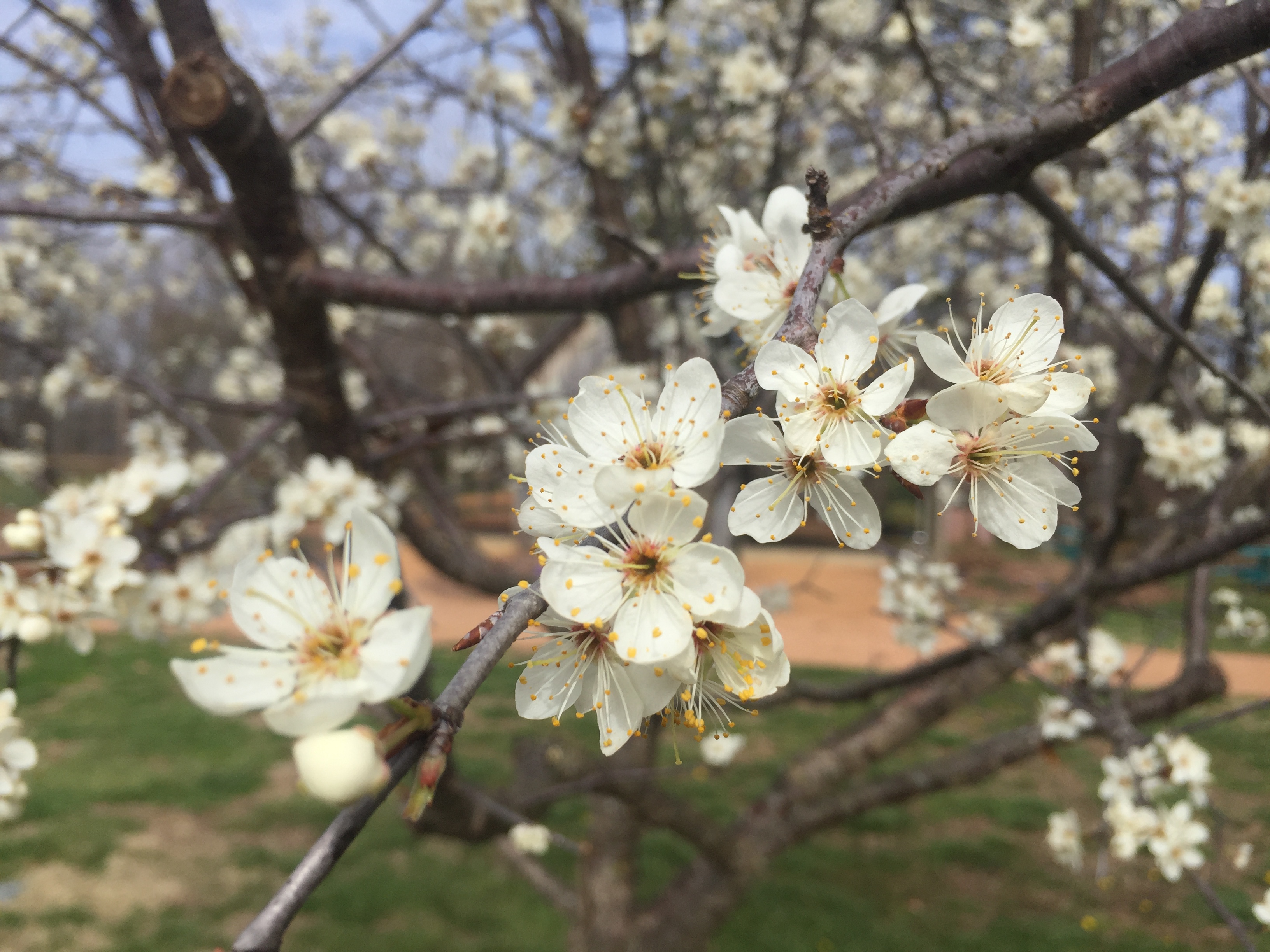Resource Library
Plant of the Week: Prunus Mexicana: Mexican Plum
This spring I’m sitting in on a course in biological anthropology. In explaining the species concept, the instructor pointed out that – at least in the animal kingdom – species cannot mate with related species and produce offspring capable of reproduction. Not so with plants. In plants, distinct species will often hybridize and give rise to fertile offspring. This is the technique whereby many of our improved plant selections arise. Let’s explore the species concept in plants by looking at Mexican plum (Prunus mexicana), an Arkansas native.
Wild plum or Mexican plum, a member of the rose family, is a single trunked, small, round-headed, twiggy tree growing 15-35 feet tall. The bark of the trunk and larger branches is dark gray and often furrowed. As the trees age, the bark peels off in large gray plates.
Leaves of Mexican plum are thick, rough textured, often wrinkled and set with deep vein traces and covered with short hairs on the lower leaf surface and petiole. The white, nearly inch wide, five petaled, fragrant flowers appear in early spring and make a nice display. The edible plums are produced in mid to late summer and go through a range of color changes from green to yellowish to purple-red when ripe. The fruit are covered with a waxy bloom and are favored by birds who will often eat them before fully ripe.
Mexican plum is native from northeastern Mexico through Texas, Arkansas and Missouri with isolated stands up the Ohio river into Kentucky and scattered populations in southern states as far as Georgia. It is found in nearly every county in the Arkansas and Missouri Ozarks and it seems likely that the species may have originated on the Ozark dome. The species was named by Sereno Watson, the curator of the Gray Herbarium at Harvard, who probably collected it when he was named the botanist for the 1867 Clarence King Geological expedition that mapped the 40th parallel through the western states.
About 200 species of Prunus are recognized worldwide with the Flora of North America describing 44 species, of which almost 20 are ornamentals or fruit crops from other parts of the world. The authors spend time describing the difficulty of getting a clear delineation between various species and use the Mexican plum / American plum intergrade as an example.
American plum (P. americana) is a smaller, shrubbier plum that often grows in thickets and is found in its greatest abundance in the upper Midwest and states to the east and south, but its range does extend into northern Arkansas. The Mexican plum usually grows as single trees scattered through open woods or at the forest edge. Where the Mexican plum tends to have fuzzy hairs, American plums usually lack the hairs.
But, unlike animals, plants can and do procreate across species boundaries. The authors of the Flora state that where the Mexican and American plums meet in Missouri and Arkansas, it is a fool’s errand to try to classify an individual botanical specimen to one or the other species. Comingling genes between species happens with all kinds of plants and is often referred to as a “hybrid swarm.”
So far, even DNA analysis has not been successful at untangling the mess. In 2005, workers analyzed the DNA found in cell chloroplasts and separated the North American Prunus into three major clades (related groups), but conceded that the individual(s) they chose for testing did not include the range of variability within the species.
From this we can conclude that the boundary lines between various plant species are not hard borders but statistical edges of a bell curve which often overlap and comingle with related species. Botanical taxonomists have argued for the past several centuries over where to draw the line and have sorted themselves into two groups. The “lumpers” favor combining all these closely related taxa into a single species regardless of what they look like while the “splitters” favor preserving the uniqueness of variation and breaking like plants into their own species group.
Mexican plum is an easy to grow plant that is offered in the nursery trade. It is tolerant of a wide array of soil types and is quite drought tolerant. I find no mention of selected clones for better fruit production, so better plums are produced from other species if plum jam is your goal. It is a host plant for several butterflies, including the giant swallowtail.
For more information about horticulture or to see other Plant of the Week columns, visit Extension’s Website, www.uaex.uada.edu, or contact your county extension agent. The Cooperative Extension Service is part of the U of A Division of Agriculture.
